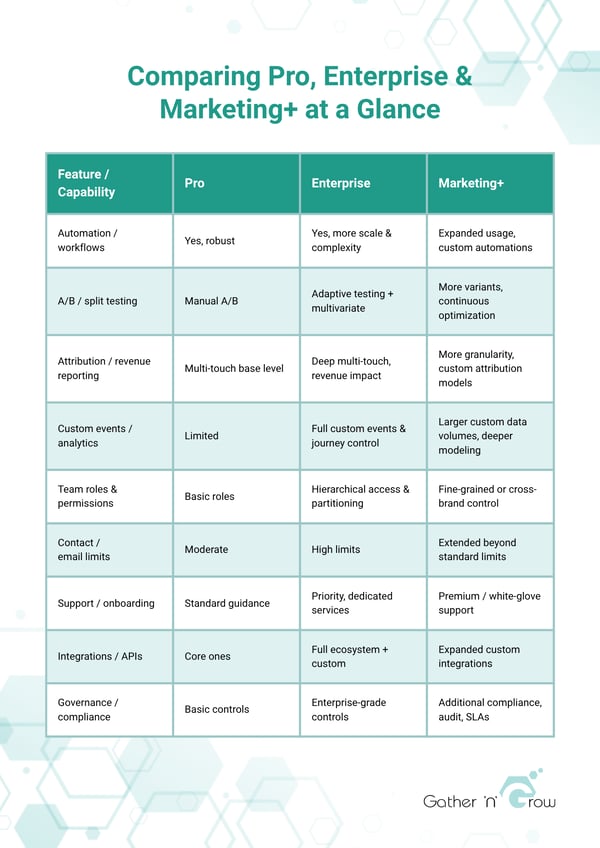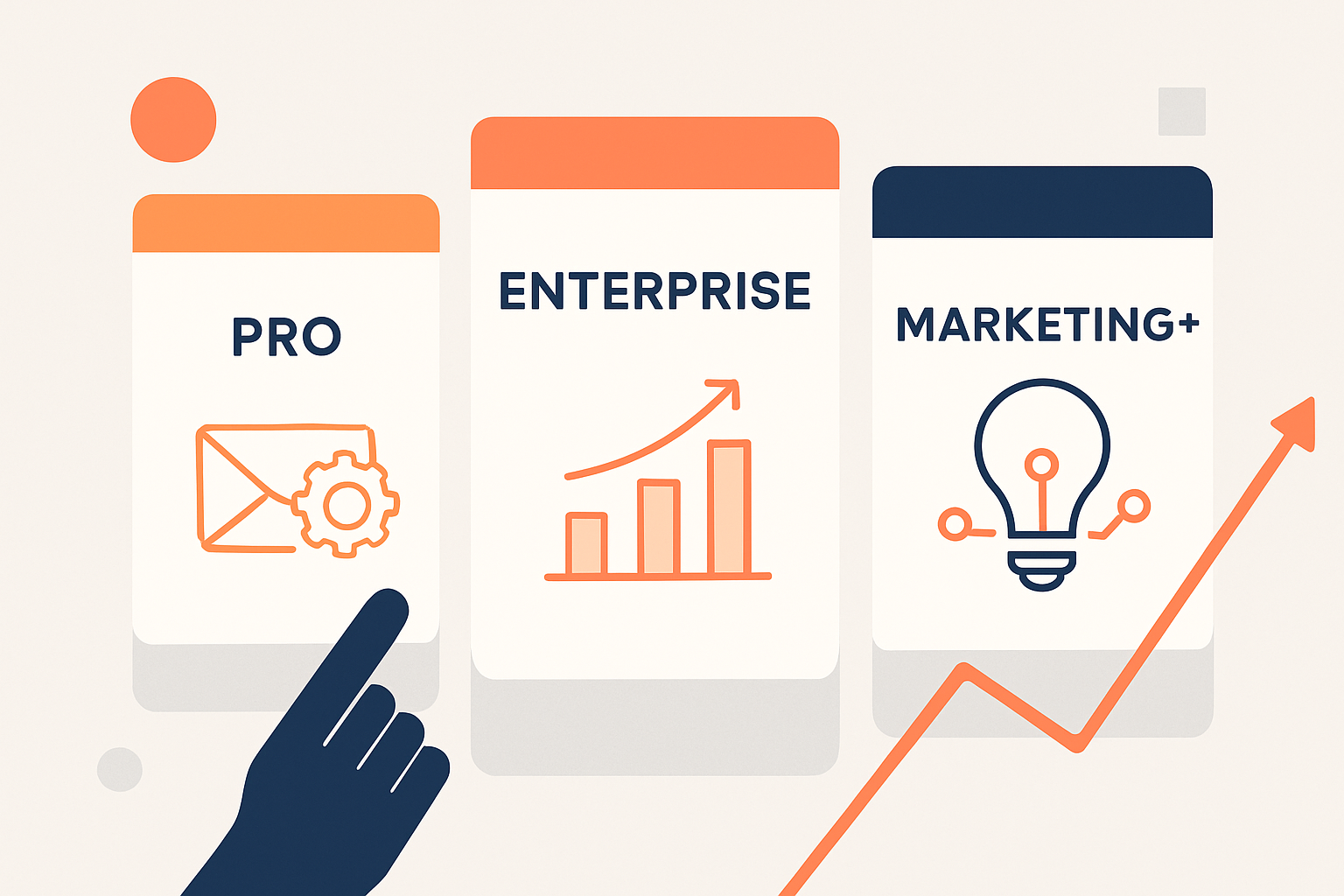HubSpot's Marketing Hub is designed to help you generate, nurture, and convert leads via automation, email, landing pages, forms, ads, social media, analytics, and more.
HubSpot's Marketing Hub is a cornerstone in many organizations' marketing tech stacks. But not all Marketing Hub subscriptions are created equal.
Choosing the right edition—whether it's Pro, Enterprise, or a "Marketing+ / Premium" tier—can mean the difference between paying for features you don't need or outgrowing your software prematurely.
In this article, we'll walk through:
- What each tier (Pro, Enterprise, Marketing+) typically includes
- Key differences (capabilities, limitations, scalability)
- Which kinds of businesses benefit most from each
- Tips to choose the right plan
- How to plan for upgrades over time
What Pro (Professional) Typically Offers
In most HubSpot plans today, the Professional (Pro) edition is the mid-tier, offering a robust set of marketing features aimed at scaling marketing teams. Some key attributes often included or expected in Pro:
- Marketing automation and workflows
- Email marketing, list segmentation, A/B testing
- Landing pages, forms, pop-ups, social publishing
- Campaigns dashboard and multi-touch attribution (but in a more basic form)
- Reporting and analytics (with defined dashboards)
- Ability to handle a moderate number of marketing contacts
- Team and user permissions at a basic level
- Access to core integrations
- Support and onboarding (though more limited than Enterprise)
Because Pro sits in the "sweet spot" for many growing companies, it typically balances power with usability and cost.
Limitations / things to watch for in Pro
- Some advanced analytics (e.g. deep journey analytics or custom events) are reserved for Enterprise.
- More basic team permissions / hierarchy (vs. fine-grained controls).
- Limits on the number of contacts, email send volumes, or concurrent workflows may bite as you scale.
- Fewer or less flexible safeguards / domain-level controls compared to Enterprise
What Enterprise Brings: Advanced Capabilities and Governance
The Enterprise edition is built for mature marketing operations, multiple teams, complex funnels, and deep measurement needs. It layers on advanced features, controls, and scalability. Some of its standout capabilities include:
- Adaptive testing (automatic optimization among multiple variants) rather than manual A/B only
- Multi-touch revenue attribution, where you can see which marketing efforts contributed to revenue across multiple touchpoints
- Customer Journey Analytics, where you can map and analyze the end-to-end paths your users take
- Custom events, which allow you to define and capture specific behaviors beyond default events
- Advanced team partitioning / hierarchical permissions, enabling you to allocate what parts of data or assets each team sees or handles
- Domain / brand management at scale (e.g. hosting multiple domains, publishing restrictions per team)
- More robust reporting and customization (e.g. custom report builder, advanced dashboards)
- Higher contact and email send limits
- Additional security, auditing, and governance features
What "Marketing+" or Premium Add-On Packs Might Look Like
- Extended contact capacity — increasing limits on marketing contacts
- More usage credits for AI agents, automation, or advanced features
- Premium add-ons such as predictive scoring, advanced attribution, or AI content assistants
- Consulting, technical support, or success management as a service layer
- Custom integrations or middleware connectors beyond standard ones
- Data ops features, such as advanced ETL, data sync controls, or API volume extensions
- Compliance, security enhancements, or added SLAs
Comparing Pro, Enterprise & Marketing+ at a Glance

Matching Plans to Business Needs
Tips for Choosing and Transitioning
- Start with your projected contact growth. Choose a plan that won't bust your limits too soon.
- Audit your reporting and measurement needs. If you need to attribute revenue or track user journeys, lean Enterprise.
- Plan your team structure and permissions ahead. Don't wait until you've grown to think about access controls.
- Factor in support, onboarding, and consulting costs. Upgrading your plan often involves change management.
- Use a modular mindset. It might make sense to start Pro and gradually layer "+" add-ons or migrate mid-cycle.
- Avoid overengineering early. Don't pay for features you won't use in the first 6–12 months.
- Reassess annually. Your needs will evolve; make sure your subscription evolves too.
Making the Right Choice
The best step forward is to map your marketing priorities for the next 12–24 months, then choose the plan that not only fits today but can stretch with you tomorrow. That way, you avoid overpaying now while staying prepared for growth later.
Not sure which tier matches your growth goals? Let's map your marketing priorities and align them with the right HubSpot features.
